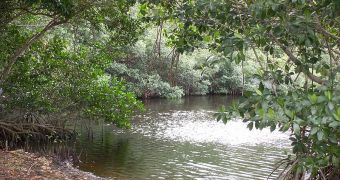A wetland that has been destroyed, and then restored, never fully recovers from its ordeal. This is the conclusion of a new study by experts at the University of California in Berkeley (UCB). The research is meant to be a warming for policymakers and the billion-dollar wetland restoration industry.
The main goal in this field is to restore the wetland ecosystems to their former glory. Over the past 100 years or so, numerous such habitats have been destroyed or damaged by human development of other causes. Their absence triggered a cascade of ecosystemic repercussions that are very difficult to handle.
In the new study, experts analyzed data on numerous restored wetlands, and then compared them with ones that have yet to be tainted. The quality of a natural wetland was found to be unachievable in the restored areas, the UCB group reports.
One of the most significant implications of the new study is that the tactics used by developers – destroy a wetland, and then create another in its stead – are not mitigating the original damage. This practice is very widespread, especially in the United States.
An additional concern is the fact that wetlands are natural carbon dioxide sponges, soaking up the dangerous greenhouse gas, and preventing it from further accelerating global warming. By destroying these habitats, developers contribute to pollution beyond what the construction sites generate directly.
“Once you degrade a wetland, it doesn’t recover its normal assemblage of plants or its rich stores of organic soil carbon, which both affect natural cycles of water and nutrients, for many years,” UCB postdoctoral fellow David Moreno-Mateos explains.
“Even after 100 years, the restored wetland is still different from what was there before, and it may never recover. Wetlands accumulate a lot of carbon, so when you dry up a wetland for agricultural use or to build houses, you are just pouring this carbon into the atmosphere,” the study investigator adds.
The CO2 currently being released in the atmosphere from these sources will linger in the air for centuries, before it is captured by other natural sponges again. Certain types of rocks, peatlands, permafrosts, rainforests and vegetation in general are the most potent carbon sinks on the planet.
Details of the new study were published in the January 24 issue of the peer-reviewed scientific journal PLoS Biology, which is edited by the Public Library of Science.

 14 DAY TRIAL //
14 DAY TRIAL //